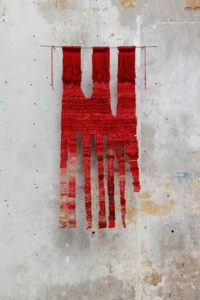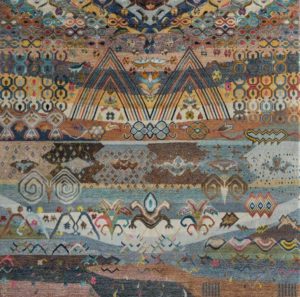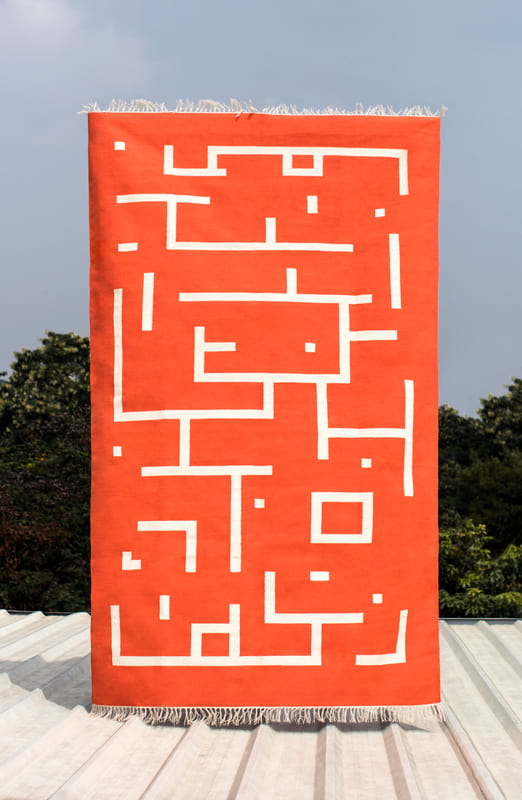Nature Morte’s latest exhibition, titled ‘Hanging Gardens’ features art from threads of emotions, dreams and personality
Artisanal – this word has been creating quite the buzz, in terms of fashion, food and décor. In the field of art, handmade practices have always been around. Nature Morte brings together an exhibition that explores the overlapping of fine art practices and textiles.
“While technology continues its unabated command over more and more of our lives, in the past decade the art world has seemingly countered this trend by championing handmade art practices which had previously been labelled with the pejorative nomenclature of craft. While ceramics have been exploited and celebrated as the preeminent material for sculpture, textiles have been similarly lauded as an appropriate avenue of aesthetic inquiry. The qualities of tactility, spontaneity, hybridity, and immediacy have become increasingly sought after by both artists themselves and art aficionados,” reads the curatorial note.
Titled ‘Hanging Gardens’ the group textile exhibition features the works of Sagarika Sundaram, Sayan Chanda and Manchaha.
Sagarika Sundaram develops new languages in the medium of woven dhurries. Her imagery relates to both historical painting and computer codes, emphasizing the flat weave to visualize the space between a perception of depth and the flow of information. The dhurries also explore a sense of nostalgia, which is palpable through works such as Nokia, Symbols, and Star.
In rethinking textile beyond its wearability, as both an art-making material and a site for interaction and protest in neocolonial contexts, she works with indigenous and regional raw fiber sourced from pastoral communities in the Himalayas and Hudson Valley.
While Sayan Chanda’s practice revolves around indigenous votive and ritual objects from Bengal, their transience, afterlife, and their materiality. He explores organic weaving to create wall reliefs that speak of abstract painting, linear repetitions, and a sleight of hand that tricks the eye. Many of his works use handwoven, or found textiles, some of which allude to personally charged objects such as the Kantha quilts from Bengal, where Sayan grew up.

Chanda’s work is informed by folk and subaltern religiosity, narratives, vernacular material culture, craft and quotidian objects. His pieces essentially are material manifestations of personal mythologies, systems and rituals. He draws parallels between craft and votives and highlights the transformative ability of making by hand.
Manchaha is a program developed by the Jaipur Rugs Foundation to empower individual weavers to experiment with imagery and authorship. This initiative is an expression of true creativity and originality originating from the remotest parts of rural Rajasthan where weavers get to design their own rugs.

Each hand-knotted carpet is one-of-a-kind and is made using hand-spun leftover yarn. The rugs with more than 200,000 knots, beautifully tells the story of its creator–with emotions, dreams and personality. Some use traditional carpet motifs in surprising combinations, while others forego recognizable patterns for the sake of abstraction.
The exhibition is on view at Nature Morte till August 28





